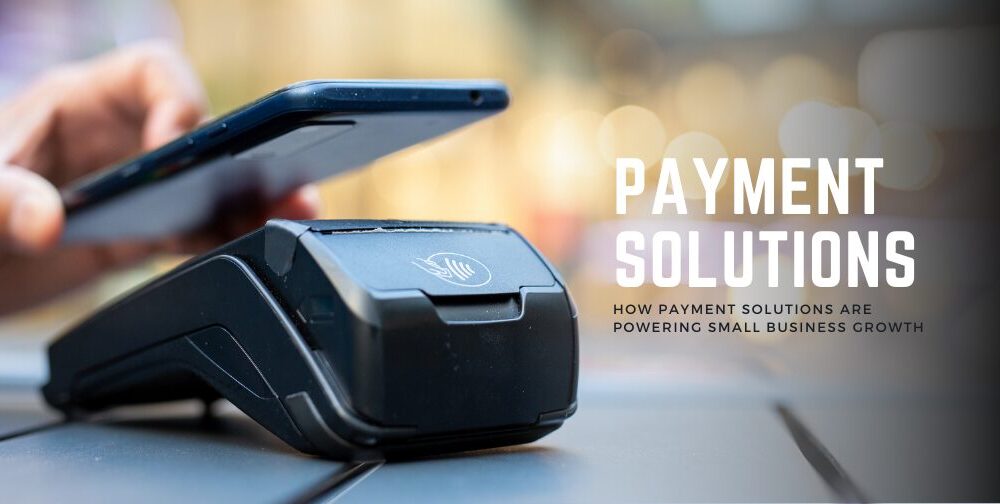The Digital Commerce Revolution: How Payment Solutions Are Powering Small Business Growth in 2025

In today’s hyper-connected world, small businesses are no longer confined to brick-and-mortar operations. The digital transformation of commerce has accelerated at an unprecedented pace, opening up new opportunities for entrepreneurs to thrive in both online and offline spaces. From smarter payment systems to frictionless ordering platforms, the right technology stack is now a critical factor in driving business success.
The Rise of Modern Payment Solutions
As small businesses look for ways to streamline operations and enhance customer experience, modern payment solutions have become essential. Traditional payment processing methods are rapidly being replaced by agile, cloud-based systems that offer speed, security, and flexibility.
Businesses in high-risk industries, in particular, face unique challenges when it comes to payment processing. Access to specialized services such as high-risk merchant accounts ensures that these businesses can accept payments securely without interruptions. Such solutions not only safeguard revenue streams but also help small enterprises navigate regulatory complexities.
Furthermore, modern payment systems provide an additional layer of data security, fraud prevention, and real-time transaction insights that are crucial for businesses operating in today’s fast-paced environment. The availability of contactless payments, mobile wallets, and seamless checkout experiences also enhances customer satisfaction, which directly impacts business growth and loyalty.
Embracing Seamless Online Ordering
Another transformative trend reshaping small businesses is the adoption of online ordering systems. Customers today expect the ability to order products or services with minimal friction, whether they are shopping on mobile devices or desktops.
Solutions like Quickvee provide businesses with the tools to create a seamless online ordering experience. By integrating with point-of-sale systems and payment gateways, these platforms enable small businesses to meet consumer expectations while improving operational efficiency.
The shift to online ordering is not just about convenience—it’s also about tapping into new revenue streams. Whether through direct website sales, mobile apps, or third-party integrations, businesses can cater to diverse customer needs. Additionally, online ordering opens the door to valuable customer data and insights that can be leveraged to personalize marketing efforts and build stronger customer relationships.
The Growing Need for Robust POS Systems
A key element of this digital commerce shift is the growing reliance on robust point-of-sale (POS) systems. POS technology has evolved beyond simple transaction processing; today’s systems provide rich analytics, inventory management, customer insights, and integrated payment solutions.
For business owners new to this space, it’s essential to understand what is a POS system and how it can streamline operations. A modern POS acts as the central nervous system of retail and hospitality businesses, helping to unify online and in-store sales while offering valuable business intelligence.
Beyond just processing transactions, the latest POS systems offer features such as employee management, customer loyalty programs, real-time inventory tracking, and financial reporting. These tools empower small business owners to make data-driven decisions that can significantly improve profitability and operational efficiency.
Choosing the Best POS System for Small Business Success
Not all POS systems are created equal. Small businesses must carefully evaluate their needs, including hardware compatibility, software features, and industry-specific requirements. The wrong system can lead to inefficiencies, customer dissatisfaction, and lost revenue.
An in-depth guide to selecting the best POS system for small business can help entrepreneurs make informed decisions. The right system not only speeds up transactions but also enhances customer service, simplifies inventory management, and improves overall profitability.
Furthermore, scalability is key. As small businesses grow, their POS systems must be able to adapt to changing needs—whether that means supporting multiple locations, expanding product lines, or integrating with new digital tools. Choosing a flexible and scalable POS system from the outset ensures long-term value and smoother growth transitions.
Tailored Solutions for Niche Industries
Generic tools rarely cover the edge cases that niche businesses face. For pizzerias, SwiftPizza is purpose-built to handle half-and-half pies, toppings by side, combo logic, and rush-hour throttling—without awkward workarounds. It unifies online ordering, Android-friendly POS, kitchen display/printer routing (make line → oven → pack), real-time menu availability, accurate tax mapping, and multi-location sync so orders move fast and stay accurate.
Beyond checkout, SwiftPizza helps operators grow profitably with coupons and promos, loyalty tools, and SMS/email re-engagement. You can define delivery zones and fees, dispatch and track drivers, and offer precise pickup/curbside ETAs. Detailed analytics surface top sellers, food-cost trends, and late-order patterns, while role-based controls and audit logs keep the front-of-house reliable as you scale.
The Road Ahead: Innovation and Adaptability
Looking forward, the digital commerce landscape is set to evolve even further. Emerging technologies such as artificial intelligence, machine learning, and blockchain will continue to influence how businesses manage payments, inventory, and customer relationships. Staying informed about these trends and adopting forward-thinking solutions will be critical for small businesses seeking to maintain a competitive edge.
Business resilience and adaptability have become central themes in recent years, particularly in the wake of global disruptions. Entrepreneurs who embrace digital transformation, leverage technology effectively, and maintain a customer-centric approach will be best positioned to succeed in 2025 and beyond.
Final Thoughts
The digital commerce revolution is here to stay, and small businesses that invest in the right technology are better positioned to succeed. From high-risk merchant accounts to modern POS systems and online ordering tools, every element of the payment ecosystem plays a critical role in business growth.
As the landscape continues to evolve, the key to staying ahead lies in embracing innovation, understanding customer expectations, and choosing technology partners who can help turn vision into reality.

Source: The Digital Commerce Revolution: How Payment Solutions Are Powering Small Business Growth in 2025




